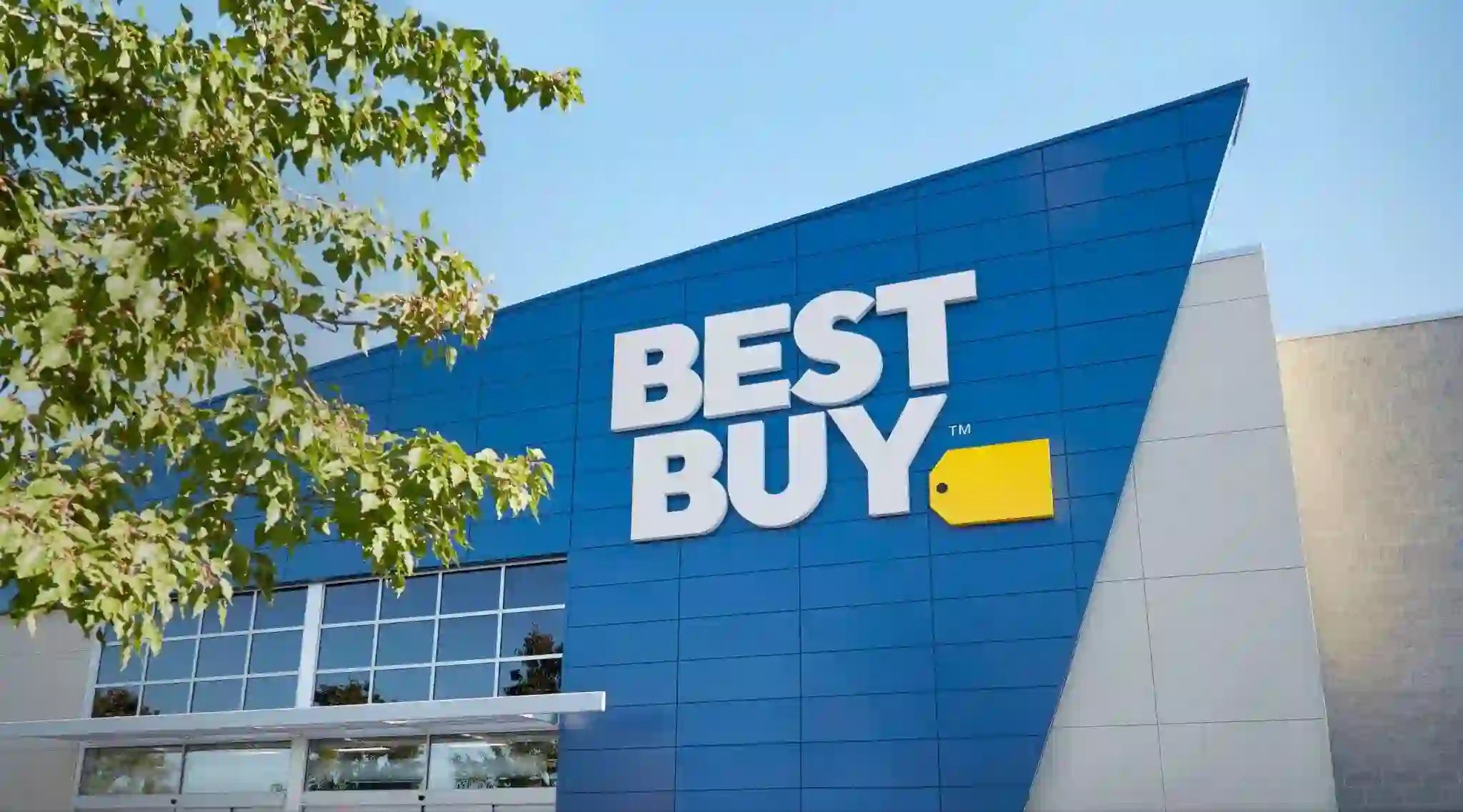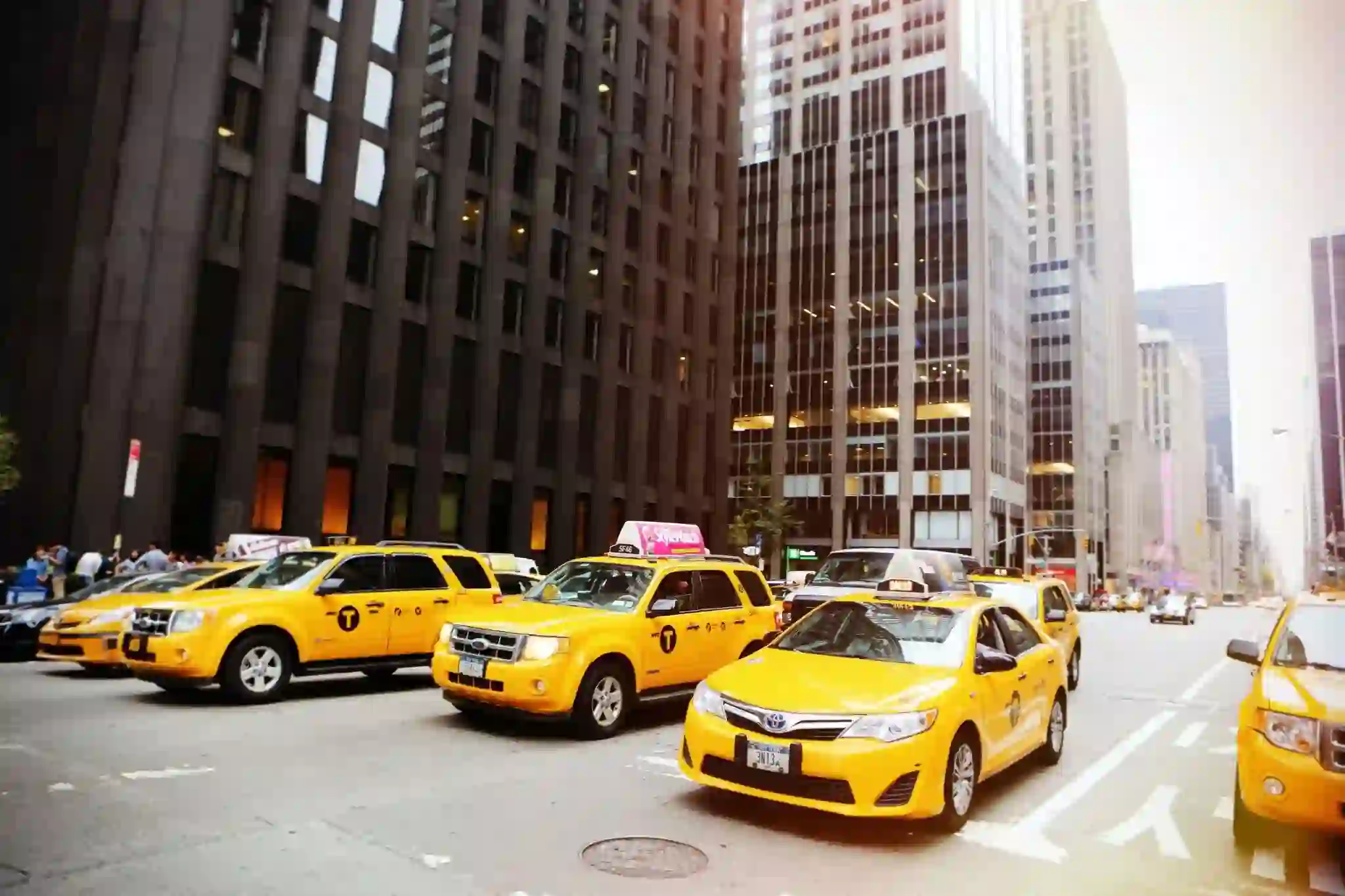It’s not difficult to find examples of successful global expansion. All over the world, people drink Coca-Cola, shop on Amazon, watch Netflix, and type up articles like this on MacBooks.
However, while there are plenty of global brands that have become household names, history is also littered with international expansion failures examples.
If you’re thinking of exploring new markets, the examples of failed expansion attempts offer invaluable lessons for you.
Pro tip: Before expanding your business globally, make sure to localize your product to better serve new customers. The easiest way to do it is by using a professional localization platform — Centus. Learn more.
Key reasons businesses fail in overseas markets
Taking business beyond the local market is usually a complex, multi-faceted endeavor. It involves all kinds of logistical challenges, skill requirements, legal obligations, and more. However, most businesses that fail internationally do so for one of these reasons:
Lack of cultural understanding and adaptation
Not understanding the local culture can lead to miscommunication and misunderstandings with customers and employees.
Poor market research and strategy development
If you don’t understand who you’re selling to and plan accordingly, it can result in unsuccessful launches and low sales.
Inadequate financial planning and management
Get this wrong, and your expansion into foreign markets is likely to fail.
To succeed in overseas markets, consider the following business expansion failures and the lessons embedded in them.
8 Companies examples that failed internationally
We’ve looked at some of the key reasons why companies might struggle to conquer new markets. Now, let’s look at some notable examples of failed international expansion strategies.
1. Walmart fails to impress in Germany and Japan
 Source: Walmart
Source: Walmart
Walmart is probably the most famous grocery brand in the US, and it makes hundreds of billions of dollars a year globally. Yet on a few occasions, it has failed to repeat its success in different countries.
For example, in 1997, Walmart attempted to make a splash in Germany, buying up the Wertkauf and Interspar chains. The company had 85 stores throughout the nation, but within a decade, it had packed its bags, incurring a $1 billion loss.
Similarly, Walmart entered the Japanese market in 2003, with the acquisition of Seiyu. Despite sticking it out until 2020, this venture also ended in failure, costing Walmart another $1.6 billion.
The American retail giant has also retreated from South Korea, Brazil, and the UK.
What went wrong?
- Local consumers’ shopping preferences: In Japan and Germany, consumers weren’t interested in Walmart’s big store, low-price strategy, preferring smaller shops and hunting for deals.
- Different regulations: In Germany, Walmart’s discount strategy ruffled the feathers of local business owners, which led to the German government ordering the company to raise its prices.
- Business culture differences: Business is done differently in Japan and Germany. In Japan, Walmart failed to understand the power that suppliers have. In Germany, Walmart’s low wages and intolerance for staff unions earned the company a bad reputation.
- Local competition: The locals knew the market better. Like many businesses that try and fail to expand, Walmart underestimated the abilities of its local competitors.
2. Israel and Australia reject Starbucks coffee culture
 Source: Unsplash
Source: Unsplash
Right across the Western world, Starbucks is a household name. It has more than 35,000 stores in more than 80 countries. In fact, this international coffee chain has so many stores, people even joke about Starbucks on the moon.
Closer to planet Earth, not all of Starbucks’ international operations have succeeded. A key example was its brief foray into the Israeli market. To be fair, it wasn’t much more than an experiment. Starbucks opened its first Israeli store in 2001, and by the time it left this new market in 2003, it only had six stores.
The company’s failure in Australia, in contrast, has been more difficult to swallow. Starbucks first got started in Australia in 2000, but by 2008, it was closing 61 of its 85 coffee shops in the country.
Today, Starbucks has 61 branches in Australia. An improvement but nowhere near the kind of presence Starbucks has in other markets, and not enough to stop it from losing millions of dollars.
What went wrong?
- Market size: While the sheer size of the Australian market has helped Starbucks stay in that country, the Israeli market was much smaller. And all of Starbucks’ Israeli stores were in Tel Aviv. It simply wasn’t enough to sustain Starbucks’ business model and sales tactics.
- Misunderstanding the customer base: Israelis are used to stronger, higher-quality coffees, and they prefer to drink it slowly. For Australians, Starbucks’ beverages were generally sweeter than they were used to.
- Overexpansion: In Australia, Starbucks failed largely because it expanded too quickly, without adequate preparation or understanding of the local market. The target country already had a thriving coffee culture, and consumers weren’t persuaded to give up on local stores.
3. Americans say no to Tesco
 Source: Unsplash
Source: Unsplash
In the UK, everyone knows Tesco – one of the biggest supermarket chains in the country. When Tesco opened its first shop in the US in 2007, it was the third-biggest retailer in the world.
Tesco wasn’t a widely known brand in the US, so the company used the name Fresh & Easy instead.
Unfortunately for Tesco, the American market was anything but easy. Despite launching with an ambitious 60 new stores in the first few months and quickly opening more, it failed to win over Stateside customers.
By 2009, Tesco had lost around $200 million on its Fresh & Easy venture. Losses continued to climb, until the grocery chain left the US in 2013, at a cost of almost $2 billion.
What went wrong?
-
Not understanding the target audience: Americans are used to large stores, where they’ll stock up on several weeks’ worth of groceries. Tesco’s Fresh & Easy stores were smaller, similar to those in the UK, where shoppers are used to buying groceries more regularly from local retailers. Additionally, Fresh & Easy’s focus on TV dinners (ready meals) didn’t appeal to American consumers.
-
Poor timing: Tesco’s expansion came during a recession, so shoppers were looking for value and familiarity. The company also failed to capitalize on Americans’ love for money-off coupons, which was a particularly glaring omission during the recession. Strategic failures: Although Tesco did its due diligence, investing in extensive market research, it still made some baffling decisions. For example, it opened many of its new stores in working-class areas, but aimed its products at wealthier Americans.
-
Confusing customers: Buying groceries should be an easy task, especially at a shop called Fresh & Easy. But American customers didn’t take kindly to the store’s reliance on self-checkout tills, preferring to be served by humans and having their shopping packed for them.
4. Home Depot fails to stir the DIY craze in China
 Source: Unsplash
Source: Unsplash
Today, the population of China stands at around 1.4 billion, and the country is more consumerist than it’s ever been. With citizens allowed to own private homes, there’s a huge number of potential new consumers for home improvement companies.
With such a big audience, it’s easy to understand why a major brand like Home Depot would be tempted to try its luck in China. Get it right, and the payoff could be enormous.
But as Home Depot soon found out, what works in one country won’t necessarily work in another. After breaking ground on its first Chinese outlet in 2006, six years later it was closing the last of its 12 stores in China, taking a $160 million hit in the process.
What went wrong?
- Misjudging the market: Home ownership is still relatively new in China, and the success of IKEA in the country shows there’s an appetite for home improvement. But most Chinese consumers don’t have the skills to do it themselves or the space to store tools. In that setting, it makes more sense for them to hire local experts instead — especially because labor costs are much more affordable than in the US.
- Choosing the wrong target audience: In the US market, Home Depot markets to men, who tend to be heavily involved in home improvements. This strategy didn’t pan out in China where wives and girlfriends often have more influence over what their homes look like.
5. Airbnb checks out in China
 Source: Pixabay
Source: Pixabay
Another company that tried and failed to crack the Chinese market, Airbnb first brought its home rental services to the region in 2016. In 2022, Airbnb shut down its business there, having struggled to find a foothold in the previous six years.
As Airbnb announced at the time, it would go on to cease representing all short-term rentals in China. Instead, it would focus on its outbound business, helping Chinese travelers to find accommodation in foreign countries.
Although Airbnb removed about 150,000 listings in China, this was just a tiny fraction (about 1%) of its overall business. Thus, albeit costly, the international business expansion failure wasn’t terminal.
What went wrong?
Airbnb hasn’t publicly stated the reasons for shrinking its Chinese operations, but we can speculate on its possible motivation.
- Local competition: One of the reasons may have been the presence of cheaper Chinese alternatives with greater local knowledge.
- Market differences: Running a business in China is likely to be very different to doing it in the West, and Airbnb may have found it too complex and expensive.
- The pandemic: Over the last few years, the Chinese government has implemented several lockdowns and travel restrictions to stop the spread of COVID-19. These will have made business difficult for Airbnb, which relies on people traveling and needing temporary accommodation.
6. Best Buy’s British plans end badly
 Source: Best Buy
Source: Best Buy
Having been founded in the 1960s, Best Buy is a well-established brand in the United States and Canada. But when the company tried to bring its electronics retail business to the UK, it wasn’t long before British consumers were saying “Bye-bye Best Buy”.
Teaming up with the UK-based cell phone retailer Carphone Warehouse, Best Buy Europe opened its first British store in 2010. The firm proudly announced plans to eventually open up to 200 stores across Europe.
It was hugely ambitious and exciting, but the plan soon started to show cracks. Before long, the plan for 200 stores was revised down to 100. By the end of 2011, there were just 11 locations, and Carphone Warehouse announced they were set to close.
A couple of months later, in early 2012, Best Buy Europe ceased to be, the stores were closed, and the websites were shuttered.
What went wrong?
- The recession: Between 2007 and 2009, the world was going through what became known as the Great Recession. Best Buy had to delay its expansion plans, and when it did get started, people still had less disposable income than before the crash. Sales of luxury goods like consumer electronics inevitably suffered.
- Poor localization: The UK and the US may share a common language, but the way they use it is very different. In some of Best Buy Europe’s video ads, the narrator had an American accent, which was off-putting for British consumers.
- Slow expansion: After boldly announcing plans for 200 stores, Best Buy failed to live up to that promise. It delivered too few shops, in out-of-the-way locations, and customers weren’t convinced to make the trip there.
7. Hailo throws the towel in the ring in North America
 Source: Pexels
Source: Pexels
If you’ve never heard of Hailo before, then you’re alone — and that’s a pretty big clue as to why it failed to expand into new markets. Founded in London in 2011, Hailo was a mobile app that paired taxi drivers with customers.
Hailo got off to a great start, and by 2012, it had already expanded into Ireland, Canada, and the US. But that proved to be a bridge too far, and in 2014, the company took the decision to leave North America and drive off into the sunset.
This failure turned out to be the beginning of the end for Hailo. By 2016, the firm had been bought up by the German rival myTaxi, and the Hailo brand was retired.
What went wrong?
- Failure to adapt: Like many companies that failed internationally, Hailo tried to export its existing business model to a new country without accounting for local culture. In the UK, it worked closely with taxi drivers, but it couldn’t reproduce that relationship with drivers in North America.
- Marketing costs: As Hailo’s CEO said when the company left North America, the marketing expenditure needed to compete there was “astronomical” — making profitability almost impossible.
- Intense competition: Hailo was, of course, not the only player in the American taxi-hailing market. Competitors like Lyft and Uber were bigger, had deeper pockets, and already had much of the available market sewn up.
8. China refuses to play along with Mattel
 Source: Unsplash
Source: Unsplash
Throughout the world, millions of children play with toys made by Mattel. Its various characters and brands have made billions of dollars and spawned countless spin-offs, from lunchboxes and clothing to TV shows and movies.
Despite that success, Chinese customers have stubbornly refused to get excited about the maker of Barbie, Hot Wheels, and Thomas the Tank Engine. In 2009, Mattel opened the House of Barbie, a flagship store in Shanghai dedicated to its beloved brand of dolls. Two years and $30 million later, the store had closed.
Since then, Mattel has continued trying to break into the Chinese market. In 2017, it announced a new partnership with Alibaba to bring its Fisher-Price range to the country, with marketing geared towards educational toys.
What went wrong?
- Strategic missteps: The Barbie brand is nowhere near as culturally important in China as it is in the US. Yet Mattel opened an enormous store dedicated to the character before establishing the brand.
- Different views of femininity: Barbie’s characteristics didn’t match the expectations of the audience. Marketing her as sexy, smart, and fashionable might appeal to Western girls, but it didn’t work in China. Not even the introduction of Ling, a Chinese Barbie, was enough.
- Overpricing: As a big flagship store, the goods in the House of Barbie were expensive. Customers could also buy Barbie dolls in other stores at a cheaper price. In the US, where Barbie is a big deal, that might work, but in China, it’s just a toy.
Companies that haven’t expanded internationally
We live in an increasingly global society, and when businesses dominate their domestic markets, it seems only natural that they’d branch out to a new international market. Yet some businesses resist the siren call of globalization and stick to their home market. Here are a few examples.
- Kroger: A US-only retail chain
- Target: Another retailer that only operates in the US
- Sainsbury’s: A leading UK grocery store chain
- Sears: A department store chain only found in the United States
- DMart: This retailer is only found in India
5 Steps to avoid international business failures
Reaching and appealing to a new target audience is never easy, but it’s even more difficult in a whole new country. If your business is at the point where you’re looking to expand into a new market, here are a few tips for getting it right.
Understand your target market
People might go crazy for your products and services in your home country, but those in other cultures can respond much differently.
Before you even step foot in another territory, do your homework. Research who is most likely to buy what you’re offering, and then do even more research so you can understand them better.
Find out what your intended audience wants, what they dislike, how much money they have, who they’re currently buying from, and anything else you can think of.
Don’t rush into international markets
Any kind of expansion is a potential risk, and that’s even more true when you’re moving into another country. So don’t go in unprepared.
Even if your competitors are going global, don’t just expand for the sake of it. Take your time to assess your current situation and the benefits of expansion.
Plan ahead, and wait for the right time to strike. Because while you’re getting your strategy right, your competitors could be over-extending themselves and joining our list of failed expansions.
Make sure you have the resources you’ll need
Expanding into other countries is a drain on resources. It will be a test not just of your finances but also your manpower, your determination, and your ambition. So before you even think about going beyond your home market, work out whether you can afford it.
Once your expansion is underway, you’ll be paying for everything from local wages and office space to marketing and distribution. You’ll also be up against established competitors who have everything in place already, including conveniently located retailers and logistics networks.
Localize your content for foreign markets
To make a great impression with new customers, you need to get your marketing message right the first time. That usually means localizing it. And if you're going to do that, you don't want to make an embarrassing or offensive mistake.
For example, IKEA once launched a workbench called “Fartfull”. This means “full speed” in Swedish, but to English speakers it sounds like something you get after eating too much cabbage soup.
If you’re building a local online presence, you’ll need to localize your website too.
Pro tip: Use a professional localization suite to save money, stay on schedule, and meet high-quality standards. Learn more.
Get your product right
Wherever you set up shop, you should aim to bring your A-game. Aggressive marketing and low prices are unlikely to be enough on their own. And if you enter a new market with cheap quality goods, ineffective marketing, and bad pricing, you will quickly make an unfavorable reputation for your company.
You may need to adapt your product to suit local consumer preferences too. That could have knock-on effects to your supply chain, so be prepared.
It may be hard going at first, but get it right, and you can boost your chances of becoming an international brand.
Get the week's best content!
By subscribing, you are agreeing to have your personal information managed in accordance with the terms of Centus Privacy Policy ->
Keep learning

13 min. read
Building a Multidomestic Strategy with Examples
6 min. read
Internationalization and Globalization: What’s the Difference Between?
11 min. read
7 Product Expansion Examples and Strategies
9 min. read
Top 10 International Marketing Principles

19 min. read
International SEO Best Practices to Boost Global Traffic
13 min. read